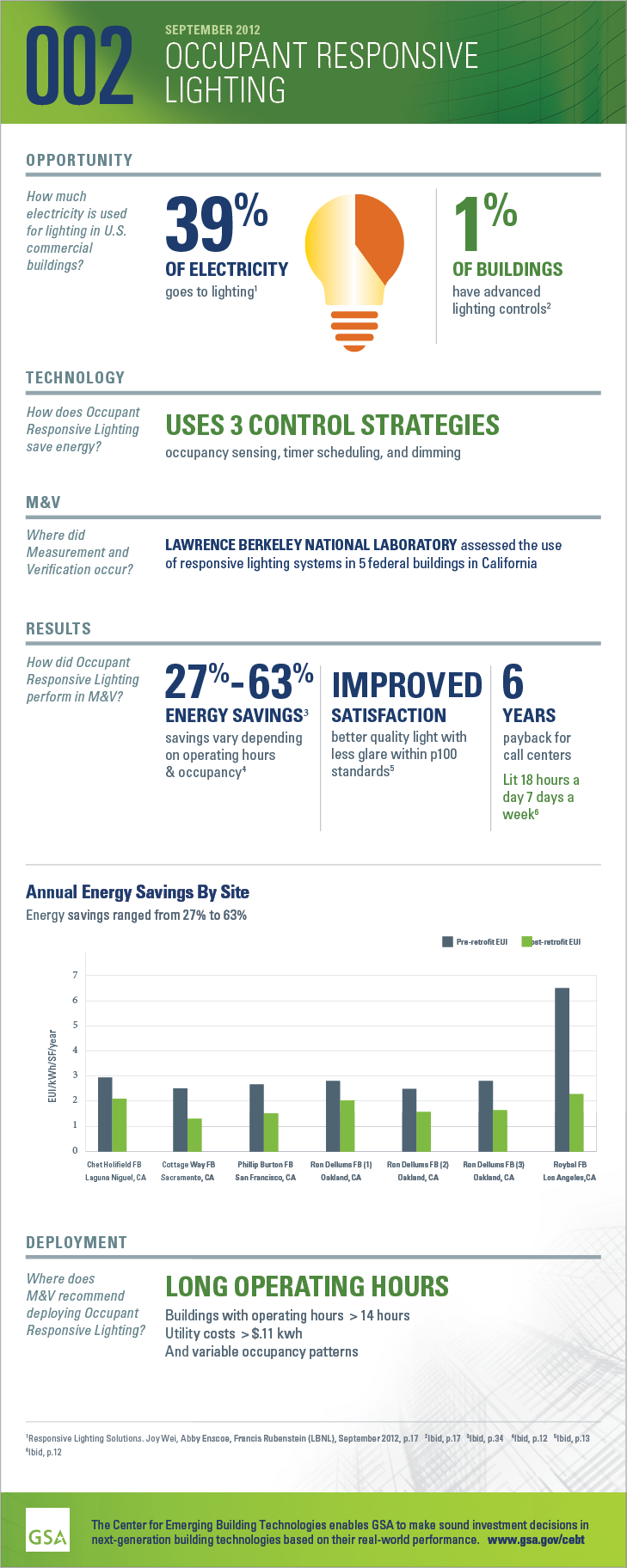Occupant Responsive Lighting
A Green Proving Ground (GPG) study of occupant responsive lighting technology used in five federal buildings in the Pacific Rim Region showed energy savings over baseline conditions:
- 27% for spaces illuminated 12 hours a day, five days a week, with regular occupancy patterns,
- to 63%, for a call center illuminated 18 hours a day, 7 days a week. Payback for the call center was less than 7 years.
View full-size infographic. [PDF - 225 KB]
Reference above to any specific commercial product, process or service does not constitute or imply its endorsement, recommendation or favoring by the United States Government or any agency thereof.
Last updated: Jun 28, 2023
Top

 U.S. General Services Administration
U.S. General Services Administration
